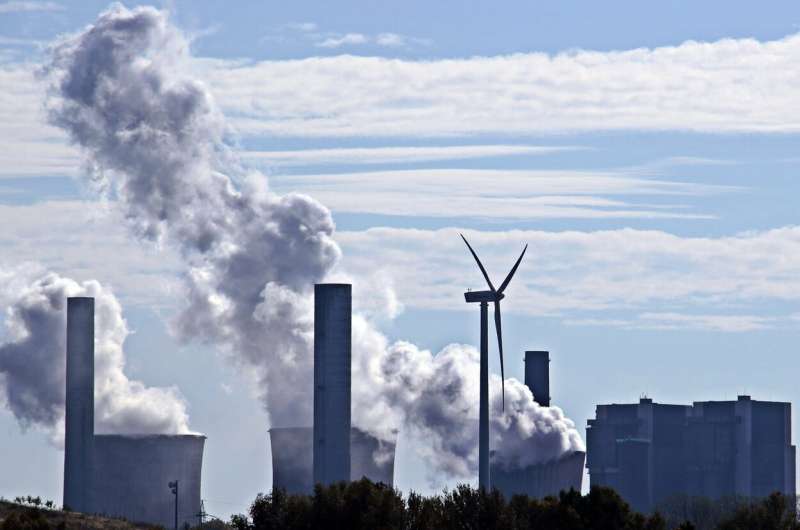This article has been reviewed according to Science X's editorial process and policies. Editors have highlighted the following attributes while ensuring the content's credibility:
fact-checked
peer-reviewed publication
trusted source
proofread
Short-term exposure to high levels of air pollution kills 1 million globally every year, new study finds

Every year, more than one million deaths globally occur because of exposure to short-term (hours to days) fine particulate matter (PM2.5) in air pollution, according to a new report, with Eastern Asia reporting more than 50% of deaths attributable to short-term PM2.5 globally.
To date most studies have focused on the health impacts of living in cities where pollution levels are consistently high, ignoring the frequent "spikes" in pollution that can impact smaller urban areas that occur for instance landscape fires, dust, and other intermittent extreme air-pollution concentration events.
The Monash University study, looking at mortality and pollution levels of PM2.5 in over 13,000 cities and towns across the globe in the two decades to 2019, is published in The Lancet Planetary Health.
Led by Professor Yuming Guo, the study is important because it is the first to look at short-term exposure globally—rather than the long-term impacts of persistent exposure such as for people living in cities with high pollution levels.
The researchers found that breathing in PM2.5 for even a few hours, and up to a few days, results in more than one million premature deaths occurring worldwide every year, particularly in Asia and Africa, and more than a fifth (22.74%) of them occurred in urban areas.
According to Professor Guo, the short-term health effects of being exposed to air pollution have been well documented, "such as the megafires in Australia during the so-called Black Summer of 2019–20 which were estimated to have led to 429 smoke-related premature deaths and 3,230 hospital admissions as a result of acute and persistent exposure to extremely high levels of bushfire-related air pollution," he said. "But this is the first study to map the global impacts of these short bursts of air pollution exposure."
The authors add that because of the high population densities in urban areas together with high levels of air pollution, "understanding the mortality burden associated with short-term exposure toPM2.5 in such areas is crucial for mitigating the negative effects of air pollution on the urban population."
According to the study:
- Asia accounted for approximately 65.2% of global mortality due to short-term PM2.5 exposure
- Africa: 17.0%
- Europe: 12.1%
- The Americas: 5.6%
- Oceania: 0.1%
The mortality burden was highest in crowded, highly polluted areas in eastern Asia, southern Asia, and western Africa with the fraction of deaths attributable to short-term PM2.5 exposure in eastern Asia was more than 50% higher than the global average.
Most areas in Australia saw a small decrease in the number of attributable deaths, but the attributable death fraction increased from 0.54% in 2000 to 0.76% in 2019, which was larger than any other subregions. One potential reason could be the increasing frequency and scale of extreme weather-related air pollution events, such as bushfire events in 2019.
The study recommends that where health is most affected by acute air pollution, implementing targeted interventions—such as air-pollution warning systems and community evacuation plans to avoid transient exposure to high PM2.5 concentrations—could mitigate its acute health damages.
More information: Estimates of global mortality burden associated with short-term exposure to fine particulate matter (PM2.5), The Lancet Planetary Health (2024). DOI: 10.1016/S2542-5196(24)00003-2




















